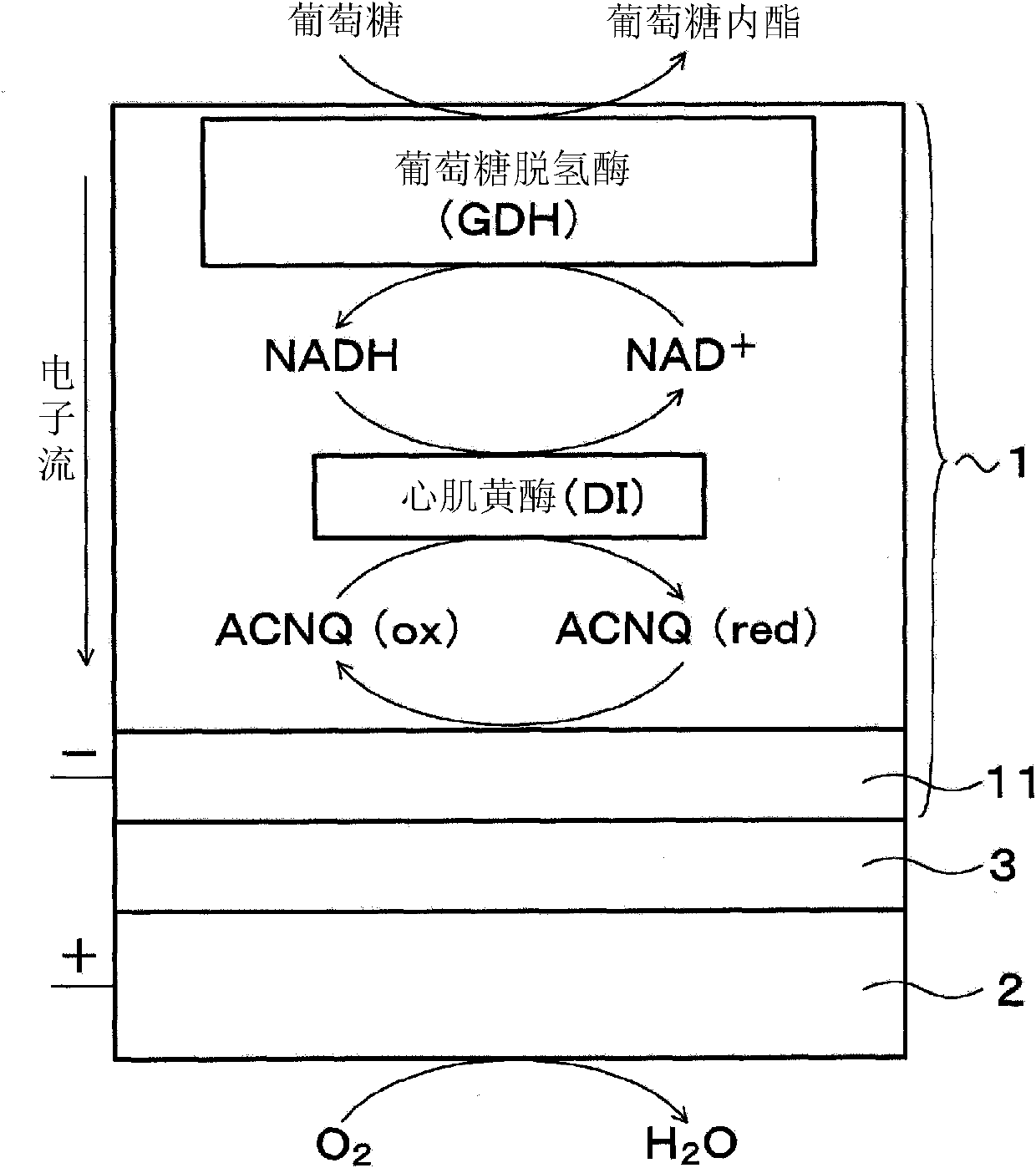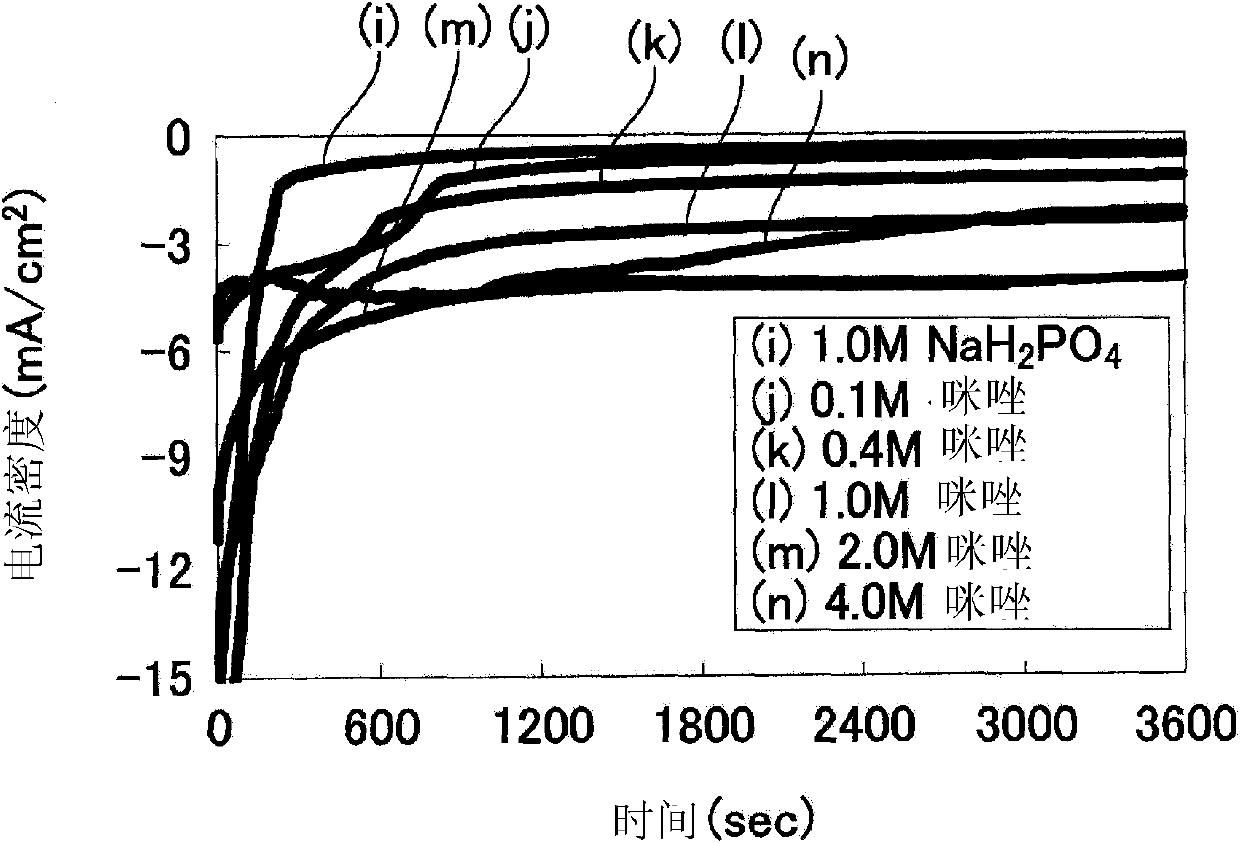Fuel cell and electronic device
A fuel cell and electrolyte technology, applied in biochemical fuel cells, fuel cell parts, battery electrodes, etc., can solve problems such as the inability to fully exert the inherent capacity of enzymes and insufficient buffer capacity.
- Summary
- Abstract
- Description
- Claims
- Application Information
AI Technical Summary
Problems solved by technology
Method used
Image
Examples
Embodiment Construction
[0090] Embodiments according to the present invention will be described below with reference to the drawings.
[0091] figure 1 A biofuel cell according to a first embodiment of the present invention is schematically shown. This biofuel cell uses glucose as fuel. figure 2 The detailed configuration of the negative electrode of this biofuel cell, an example of the enzyme group immobilized in the negative electrode, and the electron transfer reaction in the enzyme group are schematically shown.
[0092] Such as figure 1 As shown, the biofuel cell has a structure in which a negative electrode 1 and a positive electrode 2 face each other with an electrolyte layer 3 that conducts only protons therebetween. Negative electrode 1 decomposes glucose supplied as fuel with enzymes to extract electrons and generate protons (H + ). The positive electrode 2 generates water using protons transported from the negative electrode 1 through the electrolyte layer 3 , electrons transported f...
PUM
| Property | Measurement | Unit |
|---|---|---|
| pore size | aaaaa | aaaaa |
| pore size | aaaaa | aaaaa |
| thickness | aaaaa | aaaaa |
Abstract
Description
Claims
Application Information
 Login to View More
Login to View More - R&D
- Intellectual Property
- Life Sciences
- Materials
- Tech Scout
- Unparalleled Data Quality
- Higher Quality Content
- 60% Fewer Hallucinations
Browse by: Latest US Patents, China's latest patents, Technical Efficacy Thesaurus, Application Domain, Technology Topic, Popular Technical Reports.
© 2025 PatSnap. All rights reserved.Legal|Privacy policy|Modern Slavery Act Transparency Statement|Sitemap|About US| Contact US: help@patsnap.com



